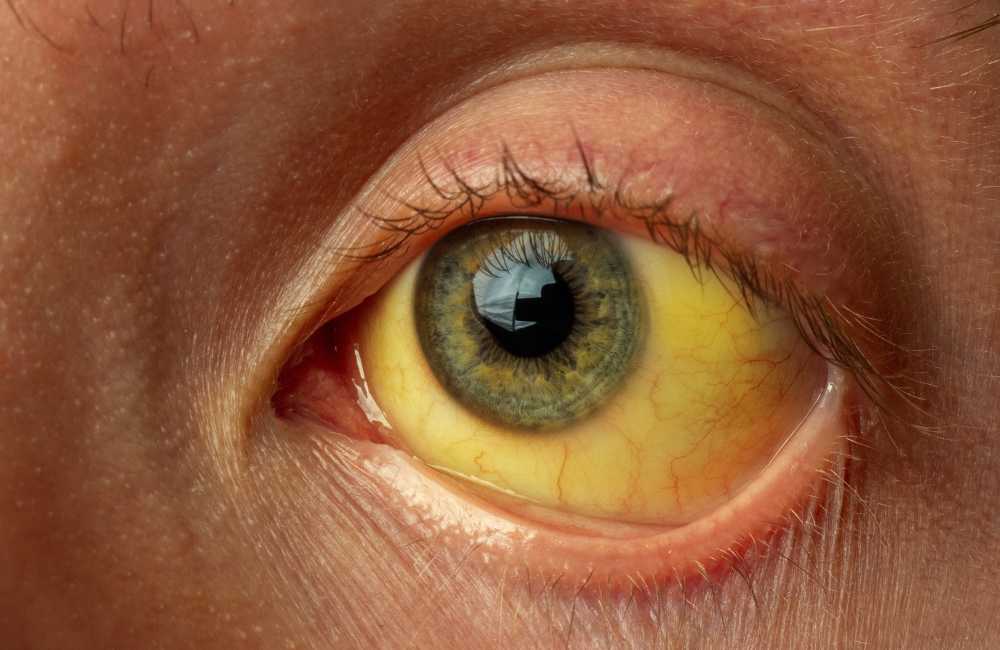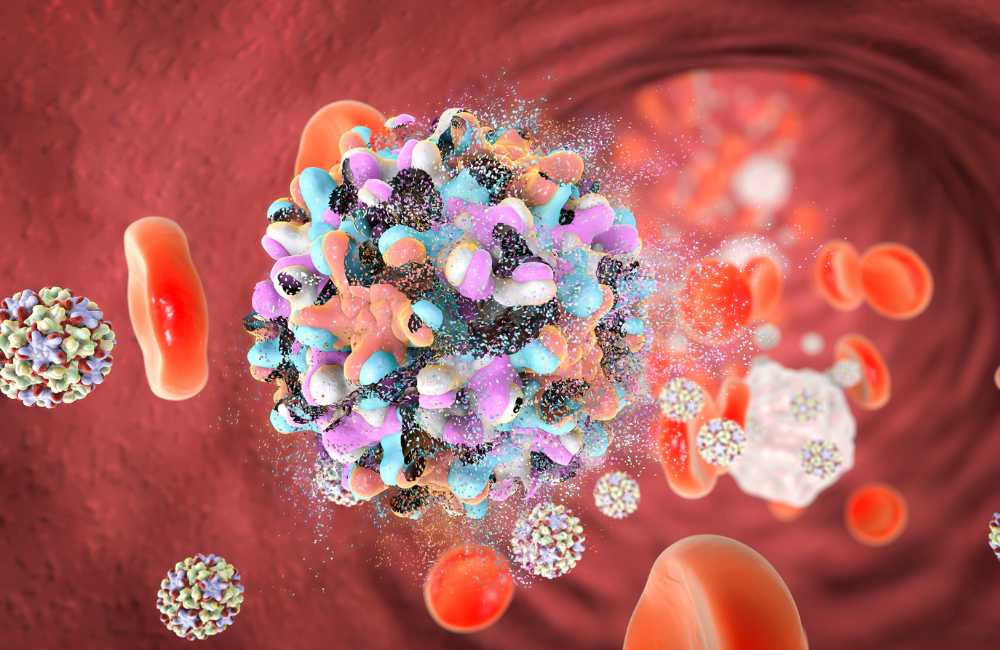Hepatitis B virus infection is a worldwide healthcare problem, especially in developing areas. It is a vaccine-preventable, potentially life-threatening liver infection that is spread through blood, semen and vaginal fluids.
HBV is 50-100 times more infectious than HIV with several modes of transmission. Globally, it is estimated that about 2 billion have been infected with HBV of which about 240 million are chronically infected.
It is also worth noting that less than 1 % of persons with hepatitis b, also have a co-infection with either HIV or other Hepatitis viruses.
What Causes Hepatitis B Virus Infection?
Hepatitis B virus infection is caused by the Hepatitis B virus, a DNA virus. It is the most thoroughly characterized and complex hepatitis virus, which replicates within the nucleus of the infected liver cells (Hepatocytes).
Types of Hepatitis B Virus Infection
-
Acute Hepatitis B virus infection
HBV infection that lasts less than six months is said to be acute. Usually, the immune system is likely to clear it from the body, and complete recovery is likely within a few months.
Most people who get hepatitis B as adults have an acute infection and can progress to chronic infection.
-
Chronic Hepatitis B virus infection
HBV infection that lasts longer than six months or more is said to be Chronic. It lingers because the immune system can’t fight off the infection. Chronic hepatitis B infection may last a lifetime, possibly leading to serious illnesses such as cirrhosis and liver cancer.
Some people with chronic hepatitis B may have no symptoms at all. Some may have ongoing fatigue and mild symptoms of acute hepatitis.
Young children with HBV infection (younger than 5 years or less) have higher chances of developing chronic HBV infection). Chronic HBV carriers provide a worldwide reservoir of infection.
Mode of Transmission
The most common ways to get hepatitis B include:
- Sex
Through unprotected sex with someone who has the virus.
- Sharing needles
The virus spreads easily via needles and syringes contaminated with infected blood.
- Accidental needle sticks
Health workers and anyone else who comes in contact with human blood can get it this way.
- Mother to child
Pregnant women with hepatitis B can pass it to their babies during childbirth. Hepatitis B doesn’t spread through kissing, food, water, shared utensils, coughing and sneezing or through touch.
High-Risk Persons
High-risk persons include the following viz:
- Female sex workers.
- Male sex workers.
- People who have had >1 sex partner during the previous 6 months.
- People with a sexually transmitted infection.
- Healthcare and public safety workers who are potentially exposed to blood and infectious body fluids.
- People who currently or had recently injected illicit drugs.
- Sickle cell anaemia patients.
- Inmates of prisons and other correctional facilities.
- Sexual partners and close contacts of HBV-infected individuals.
- Men who have sex with men.
- End-stage Kidney disease patients on maintenance hemodialysis.
- Born to a positive hepatitis b virus mother.
- Other related high-risk behaviours.
Symptoms of Hepatitis B Virus Infection
Symptoms of acute hepatitis B range from no symptoms to mild to severe. They usually appear about 1 to 4 months after being infected viz:
- Abdominal pain.
- Dark urine.
- Fever.
- Joint pain.
- Loss of appetite.
- Nausea and vomiting.
- Weakness and fatigue.
- Yellowing of the skin and the whites of the eyes (jaundice).

Investigations
-
HBsAg (Australia antigen test)
This characteristically appears during the incubation period, usually, 1-6 weeks before clinical or biochemical illness develops and implies infectivity of the blood.
-
HBV-DNA and Viral Load
Can be detected in the serum of patients with active HBV infection.
-
Complete Hepatitis B Viral Screen
-
- IgM antibody to hepatitis B core (Anti-Hbc, HbcAg)
This reflects the antibody to the viral core. The big is detected in infected liver cells and not in the serum except by special techniques.
They usually appear at the onset of clinical illness and thereafter, the titers gradually diminish, usually over years or life. Its presence with anti-HBs indicates recovery from a previous HBV infection. In acute infection, the IgM is present but in chronic infection, the IgG is predominant.
-
- Hepatitis B e antigen (HbeAg)
Suggests more active viral replication and greater infectivity.
-
- Antibody to B e antigen (Anti-Hbe)
Suggests lower infectivity.
-
- Anti HBs
Antibody to HBsAg. It appears weeks or months after clinical recovery and usually persists for life. Its detection indicates past HBV infection and relative immunity. In 5 -10% of people, the HBsAg persists and the antibodies do not develop; these patients develop chronic HBV infection.
- IgM antibodies to hepatitis A virus (IgM anti-HAV)
- Antibodies to Hepatitis C virus
- Full blood count
Here we are interested in the platelet count. Tests the liver synthetic function.
- Liver function tests
These measure the liver enzymes viz
-
- Alanine aminotransferase (ALT).
- Aspartate aminotransferase (AST).
- Alkaline phosphatase.
- Albumin.
- Bilirubin.
- Prothrombin time/international normalization ratio (PT/INR).
- Liver ultrasound scans
Assess liver injury and severity alongside Liver function tests.
- Fibro scan
Also called transient elastography. This is performed to rule out advanced fibrosis of the liver.
- Liver fibrosis assessment by Non–invasive test
AST-to- platelet ratio index (APRI) = (AST level/AST upper limit of normal) / Platelet counts (109/L) x 100
Please, note that if platelets are expressed as example 137,000, then use 137 as the denominator and the results are interpreted thus:
| APRI Value | Interpretation | Action |
| >2 | High probability ((94%) of F4 cirrhosis. | Prioritize for treatment |
| 1-2 | Risk of advanced Cirrhosis. | Consider for treatment |
| <1 | Reduced risk for advanced Fibrosis. | Consider for treatment |
| <0.5 | Fewer risks of significant Fibrosis. | Monitor and/or delay treatment. |
- Liver biopsy
Ascertains the degree of nero inflammation and fibrosis and helps guide the decision to treat.
Diagnosing Hepatitis B Virus Infection
- Clinical evaluation
A detailed history and physical examination are done. Alcohol, drugs and history of other risk factors should be taken.
Significant alcohol intake (>20 g/day in women and >30 g/day in men) can accelerate the progression of HBV- related cirrhosis. It is recommended that a history of alcohol consumption on should be taken in all persons with HBV infection.
Physical examination is conducted to evaluate for features of chronic liver disease such as jaundice, enlarged spleen (hepatomegaly), enlarged spleen (splenomegaly) and GI bleeding. The presence of ascites is highly suggestive of decompensated liver cirrhosis.
- Interpretation of the above investigations
- Assessment for co-infections
Assesses if there is HIV, and other Hepatitis viruses (A and C) coexisting with the hepatitis B virus.
- Assessment for liver diseases
Evidence of fibrosis, cirrhosis or other Liver injury and the severity are sought.
Treatment for Hepatitis B Virus Infection
-
Supportive Care
This is for acute hepatitis B Infection. The need to avoid further health risks such as alcohol, herbal concoctions, aflatoxins (mouldy groundnuts), multiple sexual partners, tattooing, and scarification marks (to avoid the risk of co-infections and possibly re-infection in cases of cure).
If blood tests show one still has an active infection after 6 months, the doctor may recommend further treatment, including medications to help control the virus and prevent liver damage.
-
Medications for Chronic HBV Infection
Without treatment, chronic hepatitis B can resolve (uncommon), progresses rapidly, or progresses slowly to cirrhosis over decades. Resolution often begins with a transient increase in disease severity and results in seroconversion from hepatitis B e antigen (HBeAg) to antibody to hepatitis B e antigen (anti-HBe), followed by loss of hepatitis B surface antigen (HBsAg).
Antiviral treatment is indicated for patients with chronic hepatitis B and one or more of the following:
-
- Elevated aminotransferase(ALT) levels.
- Elevated HBV viral load.
- Clinical or biopsy evidence of progressive disease.

However, the majority of patients treated for chronic hepatitis B must be treated indefinitely. These drugs cannot cure the disease. Stopping treatment prematurely can lead to relapse, which may be severe. However, treatment may be stopped if one of the following occurs:
-
- HbeAg converts to antibodies to HBeAg (anti-HBe).
- Tests for HBsAg become negative.
Multiple antiviral drugs are active against hepatitis B, but only four are currently recommended: First-line treatment is usually with one of the following:
- Entecavir (a nucleoside analog)
The dosage is 0.5 mg orally once a day; however, patients who have previously taken a nucleoside analogue should take 1 mg orally once a day.
- Tenofovir
-
- Tenofovir dyspraxia fumarate(TDF) (a nucleotide analog)
The dosage for TDF is 300 mg orally once a day. Dosing frequency may need to be reduced if creatinine clearance is reduced.
-
- Tenofovir alafenamide(TAF) – a newer Tenofovir
The dosage for TAF is 25 mg orally once a day; no dose adjustments are necessary if creatinine clearance is reduced. TDF and TAF are similar in efficacy, but TAF is safer in patients when renal toxicity or bone density is a concern
-
- Pegylated interferon-alfa (peginterferon alfa)
Can be used instead of interferon alfa. The dosage for pegylated interferon alfa is usually 180 mcg by injection once a week for 48 weeks. Adverse effects are similar to those of interferon alfa but may be less severe.
Please note that combination therapy has not proven superior.
-
Liver transplant
Liver transplantation should be considered for end-stage liver disease caused by HBV. In patients with HBV infection, the long-term use of first-line oral antiviral and peri-transplantation use of hepatitis B immune globulin (HBIG) have improved outcomes post-transplantation.
Prevention of HBV Infections
- Infant and neonatal hepatitis B vaccination.
- Prevention of mother-to-child HBV transmission.
-
- All exposed babies (babies born to HBsAg-positive mothers) should receive hepatitis B immune globulin (HBIG) intramuscularly in addition to the HBV vaccine given within 24 hours of birth. The site of administration for the HBV vaccine and HBIG should be different.
- HBV-infected pregnant women with HBeAg positivity should be treated with nucleos(t)ide analogues.
- HBV-infected pregnant women who are HBeAg negative but with high viraemia (≥ 200,000 IU/ml) should be treated with nucleos(t)ide analogues.
- Tenofovir and lamivudine are the recommended drugs to be used from week 28 till delivery. Entecavir its safety in pregnancy is not known(ref WHO).
- General measures to reduce HBV transmission Individuals who are HBsAg positive should:
-
- Adopt correct and consistent condom use during sexual intercourse if the partner is not HBV-immune or adequately vaccinated.
- Avoid sharing harps, razors, toothbrushes, or other personal care items.
- Do not donate sperm, blood products or organs.
- Follow standard universal precautions with open cuts or bleeding.
- Measures to reduce disease progression in persons with chronic hepatitis B
-
- Alcohol Reduction
- Prevention of sexual transmission of hepatitis B among the high-risk population. Preventive measures include:
-
- Promotion of correct and consistent condom use.
- Targeting and routine screening of high-risk populations.
- Hepatitis B vaccination.
- Integrated action to increase access to medical and social services for vulnerable persons, and victims of rape and discrimination.
- Prevention of hepatitis B transmission in healthcare settings
The prevention of hepatitis B transmission in healthcare settings includes
-
- Safe handling and disposal of sharps and waste, safe cleaning of equipment.
- Vaccination of healthcare workers.
- Post-exposure prophylaxis following needle-sick injury/sexual exposure/mucosal or percutaneous (bite) HBV exposure.
-
- Wounds should be washed with soap and water, and mucous membranes flushed with water.
- The source individuals should be screened for HBsAg, HIV and HCV.
- If the source individual is HBsAg-positive or the status is unknown, HBIG (0.06 mL/kg or 500 IU) is given intramuscularly and active vaccination commenced (0, 1 and 6 months) if the exposed individual is non-immune. HBIG is repeated at 1 month if the contact is HBeAg positive, has high HBV DNA levels or if this information is not known.
- If the exposed individual is a known non-responder to HBV vaccination, then two doses of HBIG should be given 1 month apart.
Complications of HBV Infections
- Complications of having chronic hepatitis B include:
- Hepatitis D infection.
- Liver scarring (Liver cirrhosis).
- Liver failure.
- Liver cancer.
- Death.
Hepatitis D infection can only occur in people with hepatitis B. Hepatitis D is uncommon but can also lead to chronic liver disease.
Conclusion
Hepatitis B is a highly contagious condition. It’s associated with many serious complications, some of which can be life-threatening.
But there are many treatment options available and multiple ways you can prevent infection, including getting vaccinated. Please, consult your GP if you test positive for the Hepatitis B virus for a proper evaluation.

